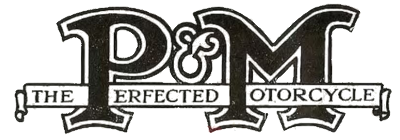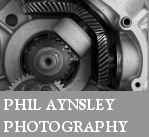


The company was established in Cleckheaton, Yorkshire, as Phelon and Moore, the name derived from those of the founders, Joah Carver Phelon and Richard Moore, who became partners in 1903.
1901 - Phelon had already been in business when, with Harry Rayner, he formed P & R to build their first motorcycle.
Unable to produce the machine himself, his first design was sold to Humber for royalty payments. After Rayner died in a car accident, Phelon was joined by Richard Moore in 1904 to form P and M.
1904 - The P & R engine was further developed and the all-chain drive was replaced by a simple two-speed gear system with clutches. Their first offering was a two-speed forecar but as this was not popular, the partners' attention soon turned to motorcycles. The first models were typical of those times and were based on bicycles with engines. Before long the name was recognised in the field of hill climbs and trials.
1907 - Only the 3.5hp model was now listed, and it was the mainstay of the company until the 1920s.
World War I. - The 3.5hp model was taken on by the Air Force and used by their despatch riders. A V-twin engine had been on the drawing board, but this was dropped with the outbreak of war.
Post War. - The company still produced just one model.
Later the company became Panther
Forecast and Guide to Olympia 1921
In general appearance the P. and M. has been improved also, and an unusual fitment (which should form part of every sidecar machine) is the ratchet brake, by means of which the outfit may be left standing on a hill without the necessity of "scotching."
The Motor Cycle, November 24th, 1921
Sources: Graces Guide; The Motor Cycle
If you have further information or a query related to this page, please contact us